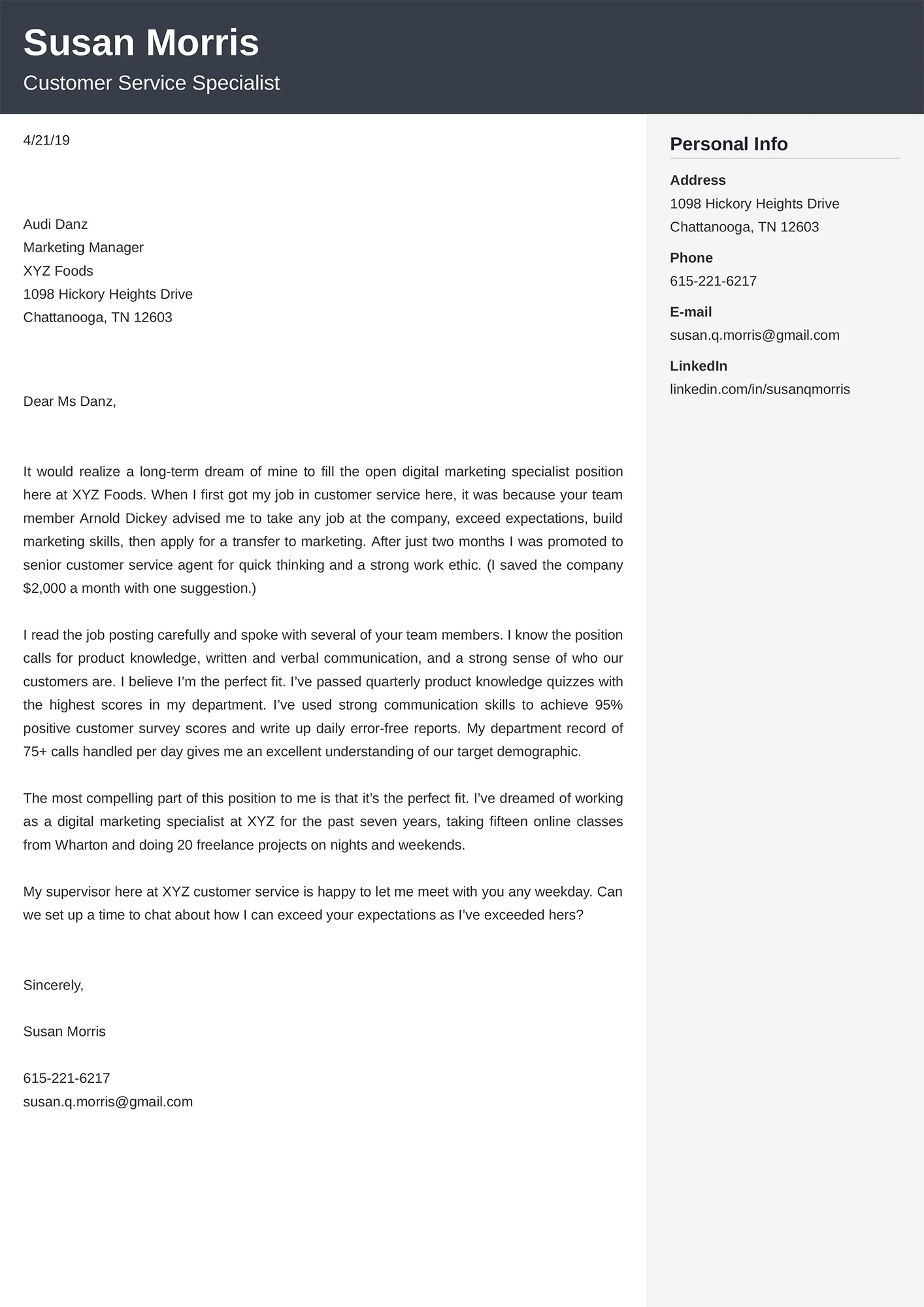Understanding Cover Letters Why They Matter
In the competitive landscape of job applications, a well-crafted cover letter can be your most significant advantage. It’s more than just a formality; it’s your chance to make a memorable first impression and demonstrate your enthusiasm for the role. A cover letter serves as a crucial bridge, connecting your skills, experience, and aspirations with the specific requirements of the job and the culture of the company. It allows you to showcase your personality, articulate your career goals, and provide a compelling narrative that complements your resume. Understanding the importance of a cover letter is the first step toward creating one that stands out.
Purpose of a Cover Letter
The primary purpose of a cover letter is to introduce you to a potential employer and to highlight why you are an ideal candidate for the position. Think of it as a personal introduction that goes beyond the details listed in your resume. It’s an opportunity to explain your career goals, show your understanding of the company, and demonstrate your fit for the role. Unlike a resume, which presents a factual summary of your experience, a cover letter allows you to be more personal and persuasive. It’s your chance to tell a story about your professional journey, linking your past experiences to the future you envision with this employer.
Cover Letter vs. Resume
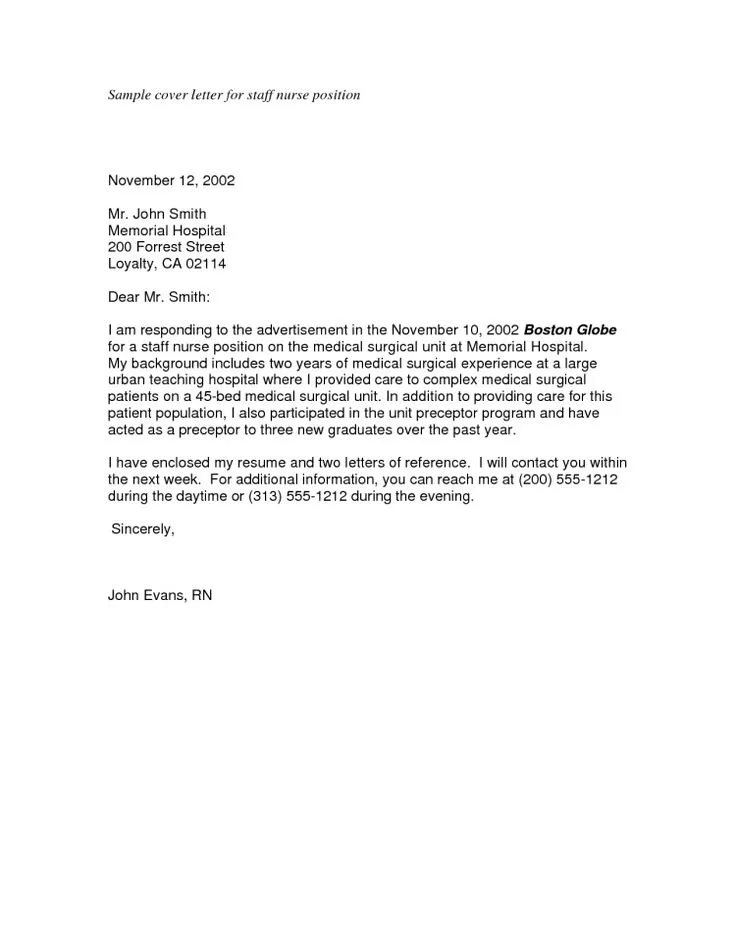
The resume and cover letter serve distinct but complementary purposes in your job application. A resume is a concise document that outlines your work history, education, skills, and accomplishments. It is a factual presentation of your professional background, designed to give a quick overview of your qualifications. The cover letter, on the other hand, is a narrative document that allows you to expand on your resume, providing context and demonstrating your personality. It’s where you explain why you’re interested in the specific role and how your skills align with the company’s needs. The resume is the ‘what,’ and the cover letter is the ‘why’ and ‘how,’ making them both crucial components of a successful application.
Essential Cover Letter Elements
Header and Contact Information
The header of your cover letter sets the stage for professionalism and clarity. It should include your full name, address, phone number, and email address. This section ensures that the hiring manager can easily contact you if they are interested in proceeding with your application. Align this information neatly at the top of the document, ensuring that it is clearly visible and easy to read. Using a professional email address and including a link to your professional profiles, like LinkedIn, can also enhance your credibility. A well-formatted header is the first step in showing that you pay attention to detail.
Salutation Addressing the Hiring Manager
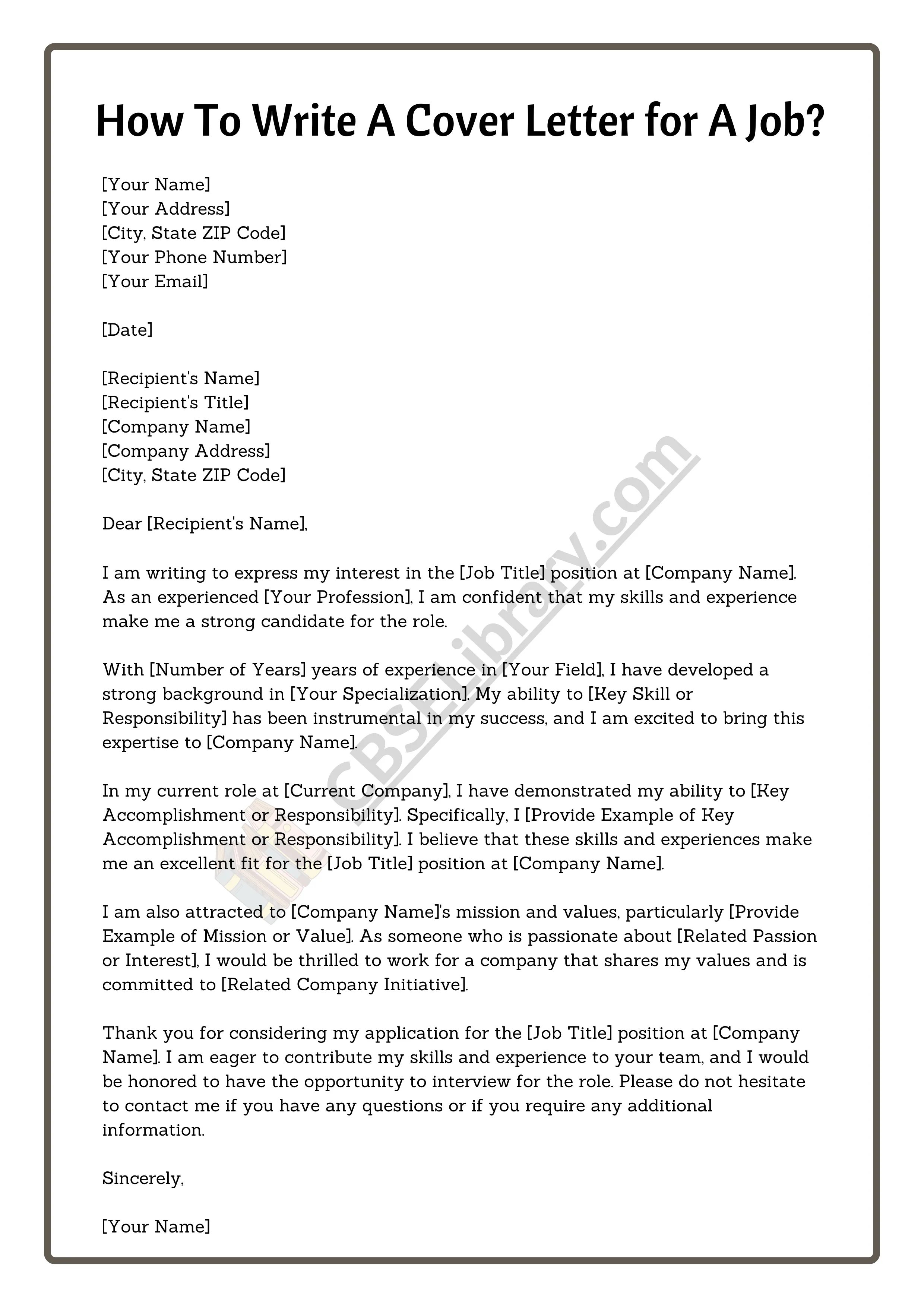
The salutation is the first thing the hiring manager reads after your header, so make it count. Whenever possible, address the cover letter to a specific person. Research the name of the hiring manager or the person in charge of recruitment for the role you are applying for. This personalized approach shows that you have taken the time to learn about the company and the role. If you are unable to find a specific name, use a professional greeting such as “Dear Hiring Manager” or “Dear [Department Name] Team.” Avoid generic greetings like “To Whom It May Concern,” as these can make your letter feel impersonal.
First Paragraph Grabbing Attention
The first paragraph of your cover letter needs to grab the reader’s attention immediately. Start by stating the position you are applying for and how you learned about the opportunity. Briefly explain why you are interested in the role and the company. This is your opportunity to set the tone and convince the reader to continue. It should be concise and compelling, highlighting your enthusiasm and making a strong first impression. Consider mentioning a specific aspect of the job that excites you or a relevant skill that you possess, showing the reader that you understand the role and are a good fit for it.
Highlighting Relevant Skills and Experience
The body of your cover letter is where you demonstrate your qualifications. Focus on the skills and experiences that align with the job description. Analyze the job posting carefully and identify the key requirements. Then, provide specific examples of how you have demonstrated those skills in previous roles. Use action verbs to describe your accomplishments and quantify your achievements whenever possible. Don’t just list your skills; show how you have applied them to achieve results. Tailor each cover letter to the specific job, ensuring that your narrative is relevant and compelling.
Quantifying Achievements
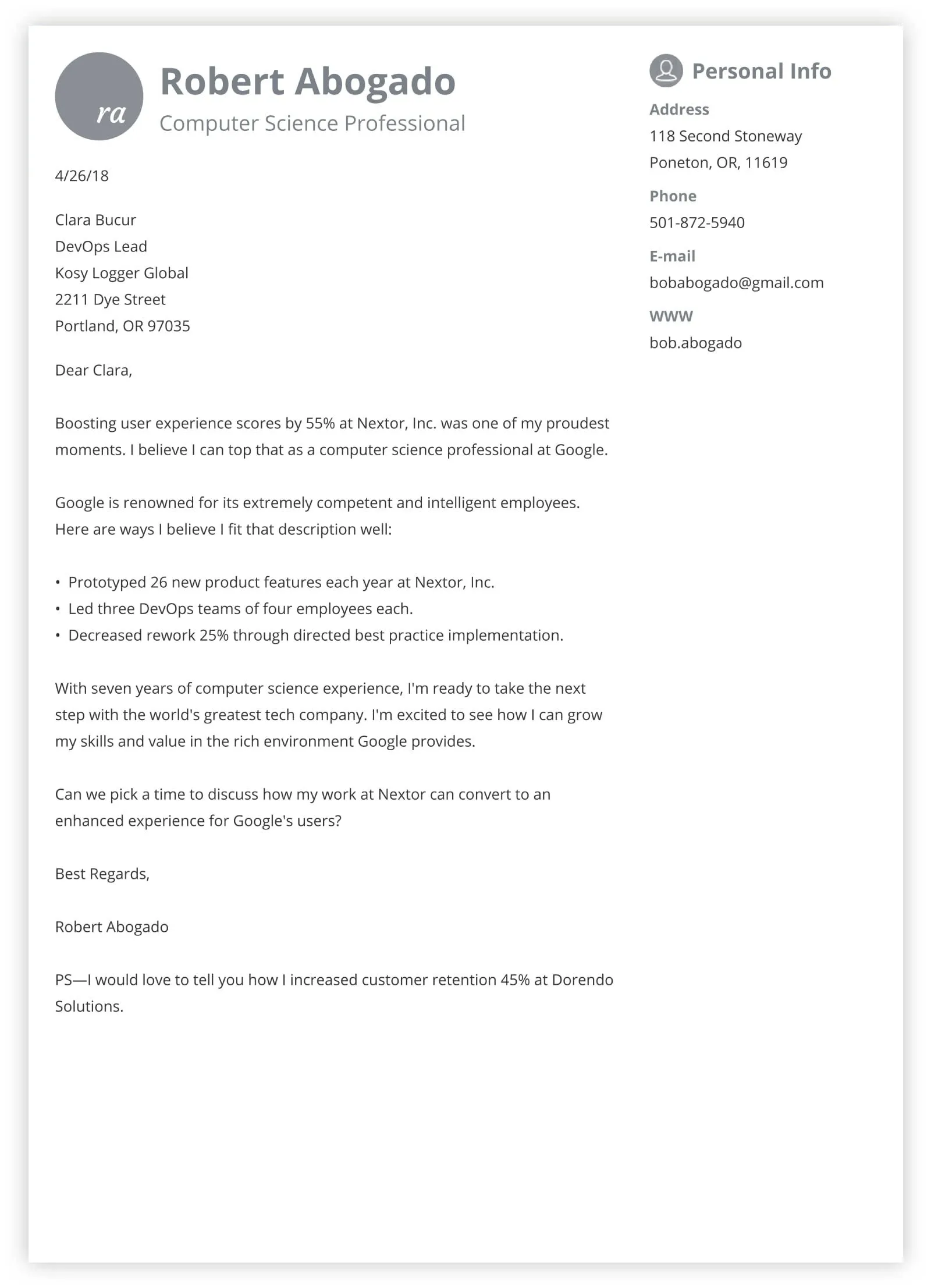
One of the most effective ways to make your cover letter stand out is by quantifying your achievements. Instead of simply stating that you improved sales, explain by how much. Instead of saying you managed a team, specify the size of the team and the results you achieved. Use numbers, percentages, and specific data to demonstrate your impact in previous roles. Quantifiable results provide concrete evidence of your capabilities and make your accomplishments more credible and persuasive. When possible, use metrics that are relevant to the role you are applying for, showing that you understand what the company values.
Tailoring Your Cover Letter
A generic cover letter is one of the quickest ways to end up in the rejection pile. Each cover letter should be tailored to the specific job and company. Research the company’s mission, values, and culture. Then, align your cover letter to demonstrate how your skills and experience align with their needs and values. Mention specific projects, initiatives, or aspects of the company that resonate with you. Show that you are not just applying for a job but are genuinely interested in contributing to their success. This tailored approach demonstrates your attention to detail and your genuine interest in the opportunity.
Body Paragraphs Showcasing Fit
The body paragraphs are the core of your cover letter, where you connect your experiences and skills to the job’s requirements. Structure these paragraphs logically, usually by addressing the key responsibilities and requirements outlined in the job description. Provide specific examples of how you have successfully handled similar tasks or situations in previous roles. Use the STAR method (Situation, Task, Action, Result) to structure your responses, providing a clear and compelling narrative that demonstrates your capabilities. Each paragraph should offer concrete evidence of your ability to perform the job and add value to the company. Make sure the entire body of your cover letter is tailored to the particular job description.
Researching the Company and Job
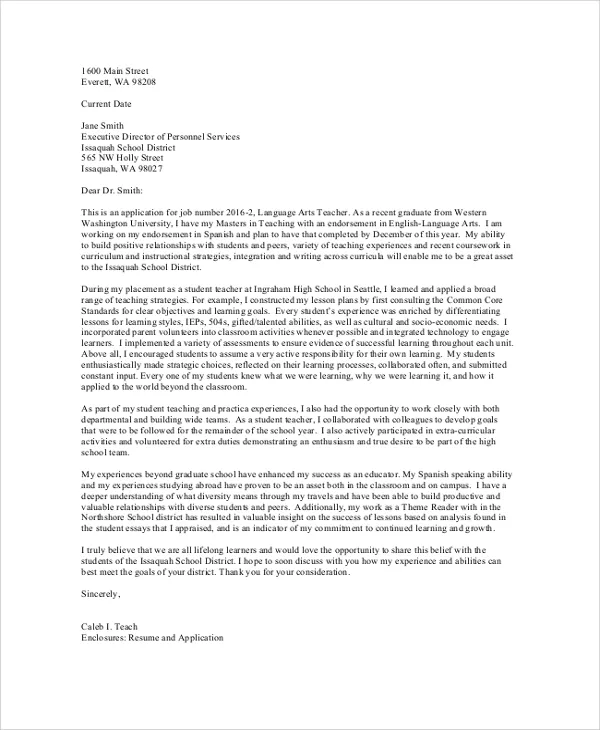
Before you start writing, take the time to thoroughly research the company and the specific job you are applying for. Visit the company’s website, read their mission statement, and explore their social media presence. Understand their values, their products or services, and their target audience. This research will help you tailor your cover letter to resonate with the company and show that you are genuinely interested in working there. Also, carefully review the job description, noting the specific skills and qualifications required. This will help you identify the key points to highlight in your cover letter and demonstrate how your experience aligns with the role.
Demonstrating Your Value
Your cover letter should clearly demonstrate the value you can bring to the company. Focus on what you can offer and how you can contribute to their success. Highlight your skills, experiences, and achievements that align with the job’s requirements. Explain how you can solve problems, improve processes, or add value to the team. Show the hiring manager that you are not just looking for a job but are prepared to make a meaningful contribution to the company’s goals. Focus on the benefits of hiring you, emphasizing the positive outcomes you can achieve.
Closing Paragraph Call to Action
The closing paragraph is your final opportunity to make a strong impression. Reiterate your interest in the role and the company. Include a clear call to action, such as requesting an interview or offering to provide additional information. Express your gratitude for the reader’s time and consideration. Keep the tone positive and enthusiastic, and ensure that your contact information is easily accessible. The closing paragraph should leave the hiring manager with a clear sense of your enthusiasm and a clear path to follow up.
Expressing Enthusiasm
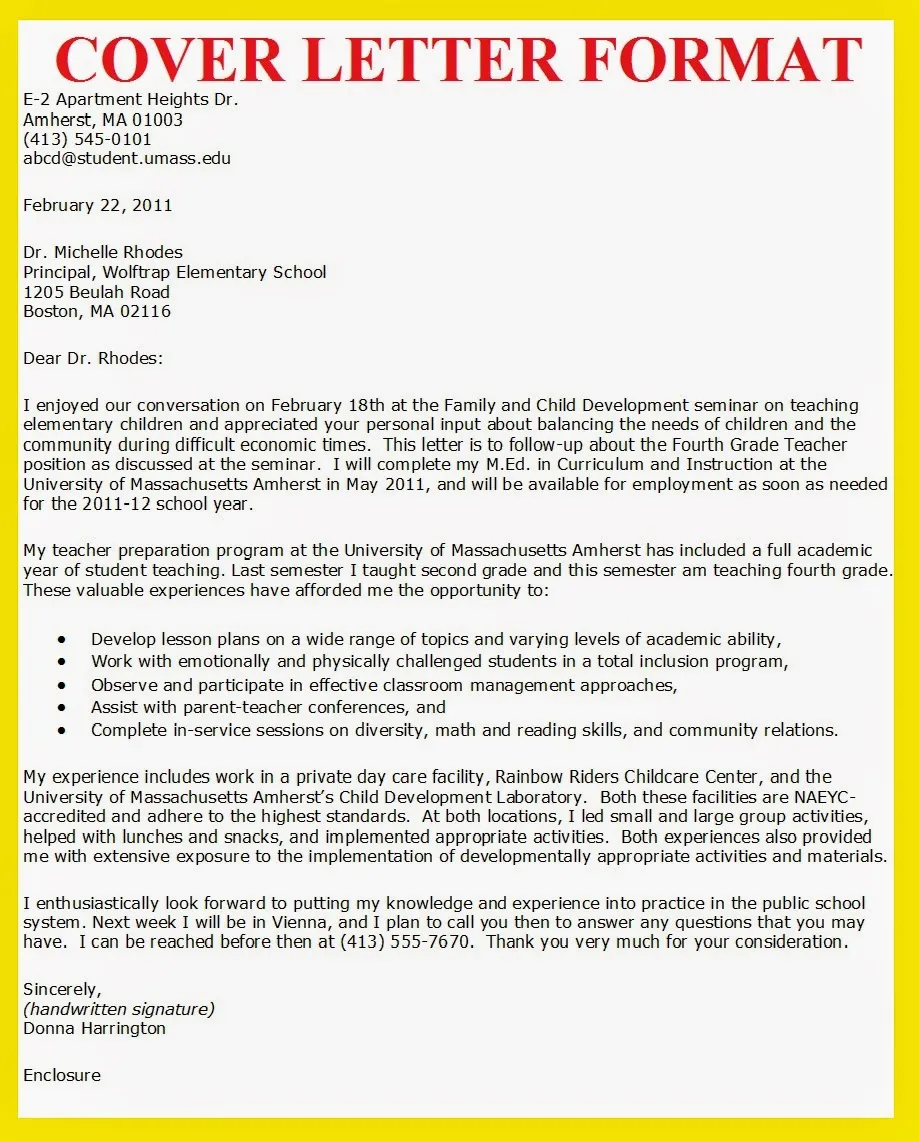
Throughout your cover letter, express your enthusiasm for the role and the company. Your passion and genuine interest can set you apart from other candidates. Use positive language and show that you are excited about the opportunity to contribute. Mention specific aspects of the job or the company that resonate with you. A genuine expression of enthusiasm can make a strong impression and increase your chances of getting an interview. The hiring manager will be more inclined to consider a candidate who clearly demonstrates a strong interest in the role.
Providing Contact Information
Make it easy for the hiring manager to contact you by including your contact information in your closing paragraph. Repeat your email address and phone number, so the reader doesn’t have to search through the document to find your contact details. This ensures that they can quickly reach you if they are interested in proceeding with your application. Ensure your contact information is up-to-date and professional. Double-check that the information is accurate to prevent any communication issues.
Cover Letter Formatting and Design
Font and Readability
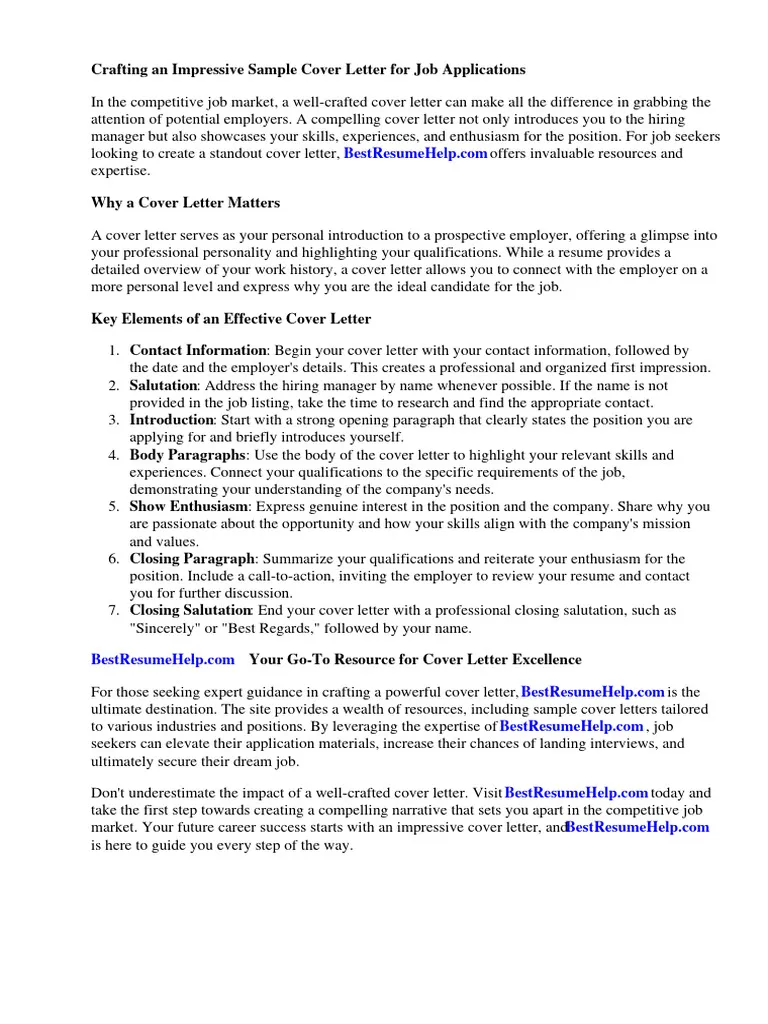
The font you choose can significantly impact the readability and professionalism of your cover letter. Select a clean, legible font such as Times New Roman, Arial, Calibri, or Helvetica. These fonts are standard and easy to read, ensuring that the hiring manager can quickly scan the document. Use a font size of 11 or 12 points, which is the standard for professional documents. Avoid using overly ornate or unconventional fonts, as they can distract from the content and make your cover letter difficult to read. The goal is to create a professional and visually appealing document.
Length and Structure
A cover letter should be concise and focused. Generally, it should be no more than one page long, divided into three to five paragraphs. The structure should follow a logical flow, with a clear introduction, body paragraphs that highlight your skills and experiences, and a strong conclusion. Use clear headings and spacing to break up the text and make it easier to read. Avoid lengthy blocks of text, as this can overwhelm the reader. The structure should clearly communicate your key qualifications and your enthusiasm for the role.
Proofreading and Editing
Before you submit your cover letter, carefully proofread and edit it. Errors in grammar, spelling, and punctuation can create a negative impression and undermine your credibility. Check for any typos, grammatical errors, and inconsistencies in formatting. Read the cover letter aloud to catch any awkward phrasing or unclear sentences. Ask a friend or colleague to review your cover letter and provide feedback. A second pair of eyes can often spot mistakes that you may have missed. Thorough proofreading and editing are essential for ensuring that your cover letter is polished and professional.
Common Cover Letter Mistakes to Avoid
Generic Cover Letters
One of the most common mistakes is submitting a generic cover letter that isn’t tailored to the specific job. Generic cover letters often use vague language and fail to demonstrate a clear understanding of the role and company. They lack the personalization necessary to make a strong impression. To avoid this, always customize your cover letter for each application. Research the company, review the job description carefully, and highlight the skills and experiences that are most relevant. A tailored cover letter demonstrates your genuine interest and increases your chances of getting noticed.
Typos and Grammatical Errors
Typos and grammatical errors are another common pitfall that can damage your credibility. These errors can make your cover letter appear unprofessional and careless. Always proofread your cover letter carefully before submitting it. Use a spell checker and grammar checker, but don’t rely on them completely. Read your cover letter aloud to catch any awkward phrasing or unclear sentences. Ask a friend or colleague to review your cover letter and provide feedback. Paying attention to these details can help you present a polished and professional application.
Ignoring the Job Description
Ignoring the job description is a significant mistake that can prevent you from getting an interview. The job description is a roadmap of what the employer is looking for in a candidate. It outlines the key skills, experiences, and qualifications required for the role. Your cover letter should directly address these requirements, highlighting how your qualifications align with what the employer is seeking. If you do not address the requirements outlined in the job description, the hiring manager may assume that you are not a good fit for the role. Customize your cover letter to include keywords and phrases from the job description to show you understand the requirements and are prepared to meet them.
Cover Letter Examples and Templates
There are many excellent cover letter examples and templates available online that can serve as a starting point for your own letter. These resources can provide guidance on formatting, structure, and content. Look for templates that are tailored to different industries or job types, such as entry-level positions or experienced professionals. When using a template, be sure to customize it to your specific situation and avoid simply copying and pasting. The goal is to use the template as a framework to create a unique and compelling cover letter that reflects your individual skills and experiences. Remember to always adapt these examples to fit your own experiences and the specific job you’re applying for. (cover-letter-examples)
Cover Letter for Entry-Level Positions
For entry-level positions, your cover letter should focus on your academic achievements, relevant coursework, internships, volunteer experiences, and any transferable skills. Highlight your enthusiasm for the field and your willingness to learn and grow. If you have limited work experience, emphasize your soft skills, such as communication, teamwork, and problem-solving abilities. Consider including a skills section where you showcase your abilities, and make sure to explain your passion for the role and the company. Tailor your cover letter to show how your skills and interests align with the entry-level requirements. (cover-letter-examples)
Cover Letter for Experienced Professionals
For experienced professionals, your cover letter should showcase your accomplishments and demonstrate your expertise. Focus on your significant achievements, quantifiable results, and leadership experience. Provide specific examples of how you have solved problems, improved processes, or added value in previous roles. Highlight your skills and experiences that align with the job description and emphasize your ability to contribute to the company’s goals. Make sure to showcase your leadership and experience so that you stand out to recruiters. Tailor your cover letter to demonstrate your value and your ability to contribute to the company’s goals. (cover-letter-examples)
Cover Letter for Specific Industries
When applying to specific industries, it’s essential to tailor your cover letter to the unique requirements and expectations of each field. Research the industry standards and adjust your language, tone, and content accordingly. For example, if you are applying for a creative role, consider including a link to your portfolio or showcasing your creative abilities. If you are applying for a technical role, emphasize your technical skills and relevant certifications. Tailoring your cover letter to the specific industry will demonstrate your understanding of the field and your ability to meet its unique demands. (cover-letter-examples)
Final Tips for Cover Letter Success
To ensure your cover letter is effective, remember these final tips. Always customize your cover letter for each job application, ensuring that it’s tailored to the specific requirements of the role and company. Proofread and edit your cover letter carefully to eliminate any errors. Use a clear and concise writing style, avoiding jargon or overly complex language. Focus on your achievements and quantify your results whenever possible. Show your enthusiasm for the role and the company. Include a call to action, such as requesting an interview or offering to provide additional information. By following these guidelines, you can create a cover letter that showcases your qualifications and helps you land your dream job. (cover-letter-tips)
